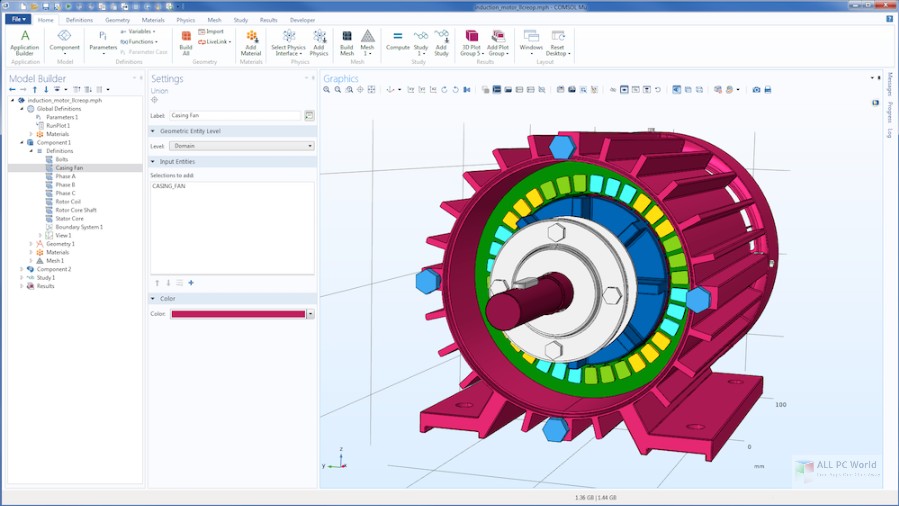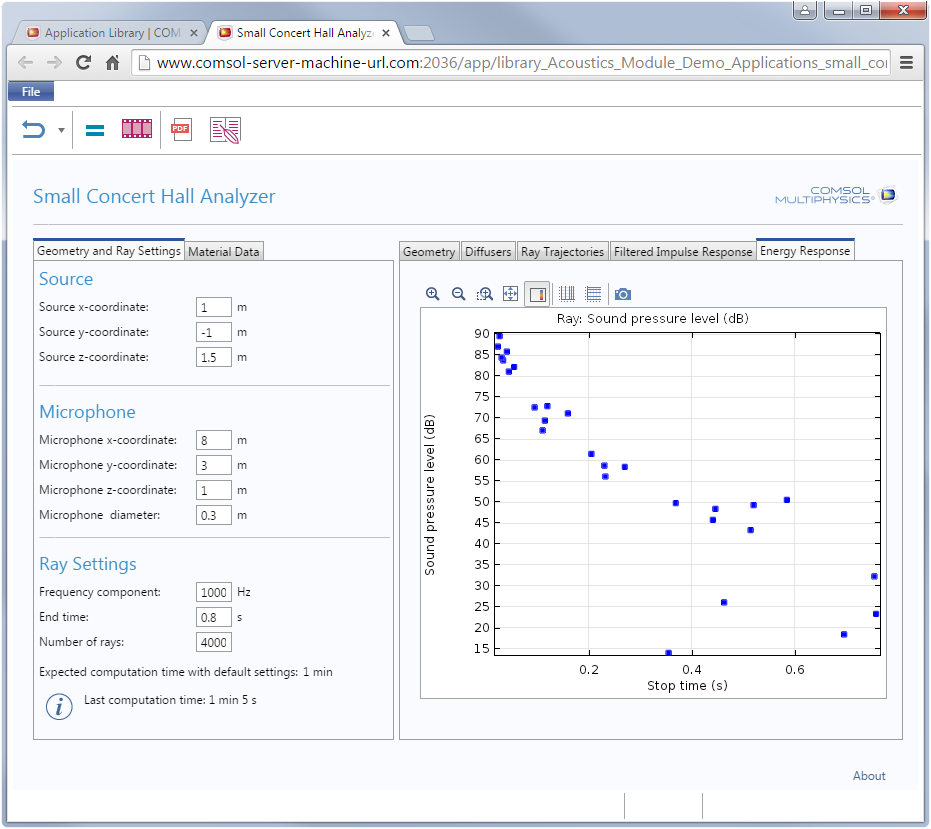

COMSOL Multiphysics offers several options here, depending on the involved physics interfaces and whether the analysis is in the time domain or frequency domain. When you need to model losses due to acoustic emission or anchor losses, the important thing is to equip your model with boundary conditions that allow outgoing waves to disappear without reflection. Modal damping is added to any other damping contributions. Modal damping is given directly in the settings for the modal solver. This is the case when different physical phenomena are connected to the mode shapes. Modal damping is particularly useful if you know from experience that some modes are more heavily damped than others. In addition to damping provided by various physics features, you can also provide a damping ratio for each eigenmode: so-called modal damping. This means that you can solve a wider range of damped problems than in many other implementations of a mode superposition method. This may not sound surprising, but it is an effect of the fact that the eigenmodes are not assumed to be decoupled in the modal solvers in COMSOL Multiphysics. Study step settings for the eigenfrequency study (left) and subsequent mode superposition study (right).Īll types of damping contributions are allowed in the mode superposition. In matrix form, the finite-element-discretized equations of motion can be written as Numerical Models for Damping The Finite Element Formulation A single damping value is used to represent the whole structure. In response spectrum analysis, the damping is part of the design response spectrum, so it should not be explicitly modeled. To suppress such waves, it is advantageous to introduce a damping model that mainly provides significant damping at high frequencies. Unless they are properly suppressed, the time steps may become unnecessary small. It is common that spurious, less-interesting waves are generated in the structure. There is, however, another important aspect of damping in time-domain analysis: It can stabilize the time stepping. The exceptions are when simulating wave propagation or if the time history of the loads is such that some resonances are strongly excited. In a time-domain analysis, the damping will, in most cases, have a limited impact on the results. Close to the resonance, the results are completely controlled by the damping, so choosing between a loss factor of 0.01 or 0.02 can, in the end, mean a factor of 2 in a stress prediction. This is a case where you really have to spend some effort on obtaining appropriate values of the damping. If the excitation frequency is in the vicinity of a natural frequency (say within ±50%), the damping model is of paramount importance, as shown in the response curves in the previous blog post. The main reason to include damping in an eigenfrequency analysis is to estimate how much different resonances will be damped. In most cases, the effects of damping on mode shapes and eigenfrequencies are marginal. That is, if the displacements in two points have different phase angles, they will not reach their peak values simultaneously.
#Comsol 5.1 supported model types free#
The interpretation of a complex-valued mode shape is that the phase angle provides information about the phase shift between different points in the structure under free vibrations.

In most cases, not only the eigenfrequencies but also the eigenmodes are complex-valued when damping is involved. This is automatic, so you do not need to add any special settings in the solver.Įigenfrequencies in a model without (upper table) and with (lower table) damping. As long as there are any dissipative effects in your model, these will be taken into account, and the computed eigenfrequencies will be complex-valued. Eigenfrequency AnalysisĪn eigenfrequency problem can be solved with or without damping in COMSOL Multiphysics. When performing a structural dynamics analysis, modeling the damping can be an important, and difficult, part of the task.Ī transient analysis of a vibroacoustic micromirror, with viscous and thermal damping taken into account.īelow, you’ll find an overview of what to take into consideration when modeling damping effects in your finite element analyses with the COMSOL Multiphysics® software.
#Comsol 5.1 supported model types how to#
How to Consider Damping in Finite Element Analysis Today, we follow up by looking at how to actually include damping in finite element models. In a previous blog post, we introduced various physical phenomena that cause damping in structures and showed how such damping can be represented mathematically.


 0 kommentar(er)
0 kommentar(er)
